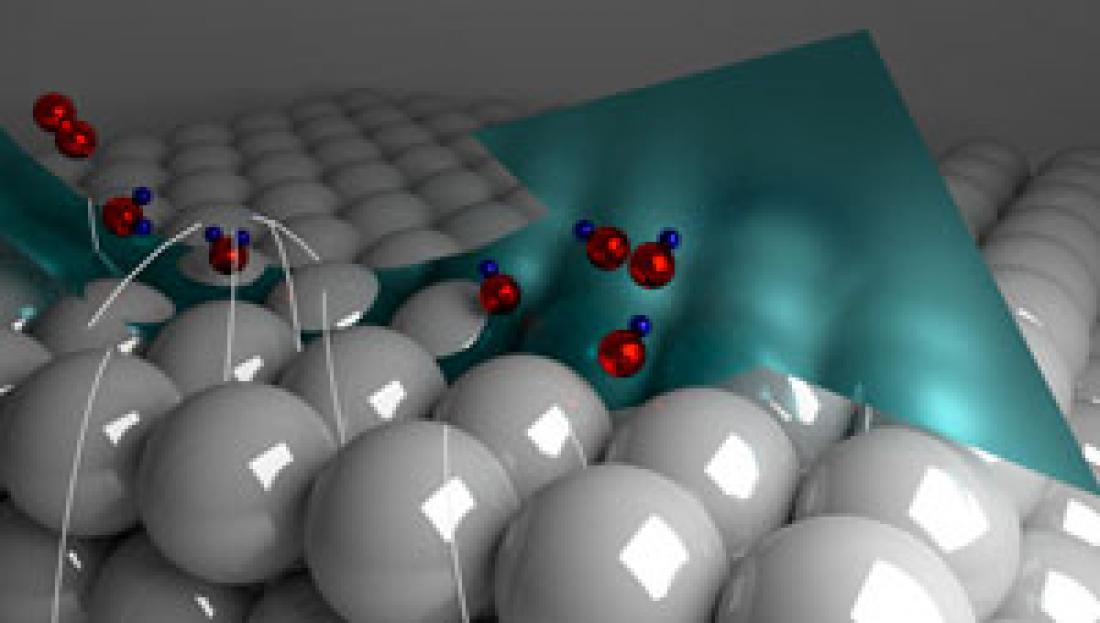Oxygen (red) and water (red and blue) molecules react on the carbon-free electrocatalyst surface (gray) as the metal-air battery is charged. © 2017 A*STAR Institute of Materials Research and Engineering
Zinc-air batteries are one of the most promising solutions for the large-scale storage of intermittently-generated renewable electricity from solar, wind or tidal: they are non-flammable, inexpensive and with a very high energy density.
But the lifetime of current zinc-air devices is far too short to be commercially viable, because oxygen attacks and corrodes their carbon-based components. Researchers at Agency for Science, Technology and Research (A*STAR), Singapore, have now developed a carbon-free version of one of the battery’s key components, the oxygen electrocatalyst [1].
Conventional rechargeable batteries store all electrochemically active materials within the device. Metal-air batteries however use oxygen from the surrounding air as the active cathode material, significantly boosting the battery’s storage capacity. To incorporate oxygen into the battery’s electrochemical cycle, these batteries use an oxygen electrocatalyst, which requires good electrical conductivity for fast electron transfer. Various metals and other catalytic materials have been tried as the electrocatalyst, but virtually all have to be laced with carbon to raise their electrical conductivity. Over time, the carbon corrodes, eventually leading to device failure.
Yun Zong and Zhaolin Liu from the Institute of Materials Research and Engineering (IMRE) at A*STAR and their colleagues have now developed a highly active oxygen electrocatalyst that contains no carbon.
This material — nickel-doped lanthanum strontium manganite (LSMN) — is a member of the perovskite family, a recently discovered group of electrochemically active materials that are also causing a stir as potential solar panel materials. “The high intrinsic electrical conductivity of LSMN means that carbon is not needed as additive for conductivity enhancement,” Zong says.
By alternating the ratio of nickel to manganese in the material, Zong was able to tune the perovskite’s performance. The best-performing formulation, containing 10 per cent nickel, matched the electrocatalytic performance of palladium on carbon, the current benchmark electrocatalyst. Yet, without the carbon, the stability of the material was greatly enhanced. The team tested LSMN over 300 electrochemical cycles and saw negligible performance degradation.
The next hurdle to overcome, Zong explains, is changing the process. In current metal-air battery designs, the catalyst is formed layer by layer on to a mat of carbon. “This defeats the purpose of using carbon-free catalysts, as underlying carbon may still suffer corrosion,” Zong says. One possibility is to replace the carbon mats with a nickel foam, on to which the carbon-free electrocatalyst could be grown in situ, he adds. “Our group is developing metal-air batteries where all components are essentially carbon-free.”
The team is also working on carbon-free versions of other battery technologies, says Zong.
The A*STAR-affiliated researchers contributing to this research are from the Institute of Materials Research and Engineering



